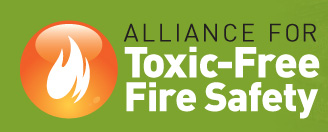  |
|||
June 30, 2011 Toxic Contamination in Offices: (Boston) Researchers studied over two dozen offices in Boston and discovered that dangerous flame retardant chemicals - polybrominated diphenyl ethers (PBDEs) - banned by an international treaty are contaminating every office. The study, Exposure to PBDEs in the Office Environment: Evaluating the Relationship Between Dust, Handwipes, and Serum, was published June 30th in Environmental Health Perspectives. “It is the first peer-reviewed research to correlate levels of PBDEs on people’s hands to concentrations in their blood,” says lead author Deborah Watkins, a Ph.D.candidate at the Boston University School of Public Health’s Department of Environmental Health. “These chemicals can mimic our bodies’ natural hormones and may contribute to problems with reproduction and development “ explains Ami Zota, Sc.D., researcher with the Program on Reproductive Health and the Environment at the University of California San Francisco, and not affiliated with the study. “Young men and women of child bearing age working in offices should know that fetal exposure to PBDEs can alter brain development and lead to long lasting developmental deficits including reduced IQ." “While our study sampled a relatively small number of offices, the findings suggest additional research could indicate most offices are contaminated,” says Tom Webster, PhD, study co-author and associate chairman, Boston University School of Public Health. “PBDEs are very pervasive but even in new offices with brand new furniture we found PBDE compounds present.” The study authors found the amount of PBDEs on workers’ hands to be a good predictor of how much was measured in their blood. However, frequent handwashing appeared to reduce exposure to certain PBDEs. “An outdated California regulation virtually forces manufacturers to put these flame retardant chemicals into foam for products meant for sale in California and elsewhere, even though doing so doesn’t prevent fires” explains Ana Mascarenas, from Physicians for Social Responsibility - Los Angeles. “Some of these chemicals are banned, yet we still find them almost everywhere we look. Replacements for the banned chemicals are just as bad. Unfortunately, it appears as if campaign contributions from corporations to some California legislators are keeping this obsolete regulation in place, continuing to boost chemical sales - and contamination.” The city of Boston requires that all office furniture meet California’s TB-117 flammability standard, which is the strictest in the country. Some other cities also have similar requirements. “Fire retardant chemicals used to meet California regulation don’t provide a fire safety benefit, “says Arlene Blum, PhD, executive director of the Green Science Policy Institute and co-author of a recent study documenting lack of fire safety benefits from the chemicals used to meet CA TB 117. “Yet they are in the products, and exposure is linked to thyroid disease, lowered IQs in children, and reproductive effects such as infertility.” Kathy Curtis, coordinator for the Alliance for Toxic Free Fire Safety, points to failure in federal law to explain how PBDEs persist in so many consumer goods, “When Congress eventually reforms the nation’s chemical law - the Toxic Substances Control Act of 1976 - we will hopefully benefit from the overdue requirement that chemicals be proven safe before landing on the market. If flame retardant chemicals had to prove they were safe for human health, they’d never have been approved for use to begin with.” Available for Interviews Tom Webster, PhD, Associate Chair, Environmental Health, Boston University School of Public Health Office 617.638.4620. twebster@bu.edu. Dr. Webster is co-author of the dust study and of other studies on contamination from halogenated flame retardant chemicals. Ami Zota, Sc.D., M.S., Postdoctoral Fellow Program on Reproductive Health and the Environment, University of California San Francisco Office 510.986.8925 Arlene Blum, PhD, Executive Director, Green Science Policy Institute Kathy Curtis, Policy Director, Clean New York, Alliance for Toxic Free Fire Safety Coordinator home office 518.355.6202 cell 518.708.3922 clean.kathy@gmail.com http://www.clean-ny.org. Ms Curtis can address international, federal, and states' policy on halogenated flame retardant chemicals. Ana Mascareñas, Policy & Communications Coordinator, Physicians for Social Responsibility - Los Angeles (PSR-LA), office 213.689.9170, cell 323.743.3241. Ms. Mascarenas can address California state policy and industry influence around halogenated flame retardant chemicals. For reporter assistance, contact: Stephenie Hendricks 415.258.9151, stephdh@earthlink.net
|
|||




